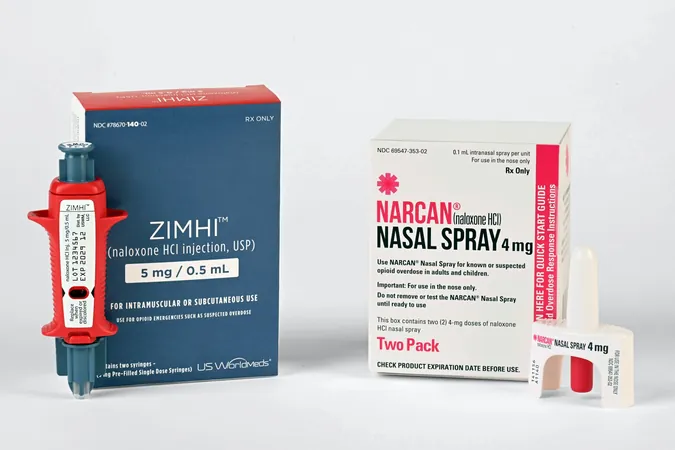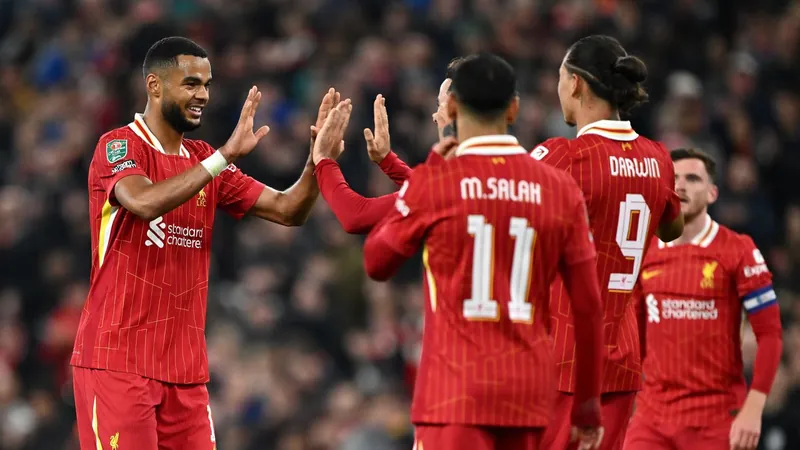
Naloxone Proves Life-Saving in Over Half of Pediatric Opioid Overdose Cases, New Study Reveals!
2024-09-27
Introduction
The opioid crisis continues to ravage communities across the United States, and alarmingly, it is now significantly affecting our youth—children and teenagers—like never before. A game-changing study has shed light on the potent efficacy of Naloxone, a medication designed to counter the effects of opioid overdose. This life-saving drug is now being administered not just in hospitals but also by courageous emergency responders who are on the front lines of this ongoing battle.
Study Findings
In a revealing piece of research presented at the American Academy of Pediatrics 2024 National Conference & Exhibition, scientists disclosed that Naloxone was used successfully in 54.1% of pediatric emergency responses. The study, titled “Naloxone Administration to Pediatric Patients During Emergency Medical Service Events,” analyzed data from the National Emergency Medicine Service Information System (NEMSIS) and found that during the year 2022, Naloxone was administered to pediatric patients ages 17 and younger in over 6,215 cases!
An astounding finding within the study showed that approximately one-third of these children (32.7%) needed two or more doses of Naloxone, indicating the severity of these overdoses. Dr. Christopher Gaw, the lead author of the study and an emergency medicine physician at Nationwide Children's Hospital, commented, “Emergency medical services clinicians rarely reported that Naloxone worsened clinical status, and Naloxone improved a patient's clinical condition in over half of emergency responses in our study.” This underscores how essential Naloxone can be in treating suspected opioid poisonings among the young.
Age and Settings
Looking deeper into the data, the study highlighted that a staggering 20.7% of adolescents aged 13–17 received Naloxone before the arrival of emergency medical services (EMS), suggesting that bystanders are increasingly trained and willing to use this life-saving drug. Most Naloxone administrations took place in residential settings (61.4%), raising concerns about the environment in which these tragic incidents are occurring.
Demographic Analysis
Figures from the research indicate that behaviors significantly contribute to these incidents: the majority of overdoses were seen in teenagers aged 13-17 (79.4%), with younger children aged 1-5 comprising only 10.2% of cases. Interestingly, boys were slightly more likely to receive Naloxone, with a rate of 55.3%.
Takeaway Messages
These findings illustrate a need for enhanced awareness regarding older adolescents. Many calls for help initially described signs of overdose, poisoning, or ingestion—indicative that confusion reigns during those first critical moments of emergency response. Dr. Gaw pointed out that these indicators signal potential opioid poisonings, representing a critical opportunity for timely intervention through the use of Naloxone.
As the opioid epidemic continues to evolve, this study serves as a vital reminder that Naloxone can be a safe and effective antidote, especially in the hands of well-informed friends, family, and emergency professionals. Efforts to distribute training and Naloxone kits should be ramped up within communities to further combat this devastating crisis and ensure that no more lives are needlessly lost.



 Brasil (PT)
Brasil (PT)
 Canada (EN)
Canada (EN)
 Chile (ES)
Chile (ES)
 España (ES)
España (ES)
 France (FR)
France (FR)
 Hong Kong (EN)
Hong Kong (EN)
 Italia (IT)
Italia (IT)
 日本 (JA)
日本 (JA)
 Magyarország (HU)
Magyarország (HU)
 Norge (NO)
Norge (NO)
 Polska (PL)
Polska (PL)
 Schweiz (DE)
Schweiz (DE)
 Singapore (EN)
Singapore (EN)
 Sverige (SV)
Sverige (SV)
 Suomi (FI)
Suomi (FI)
 Türkiye (TR)
Türkiye (TR)